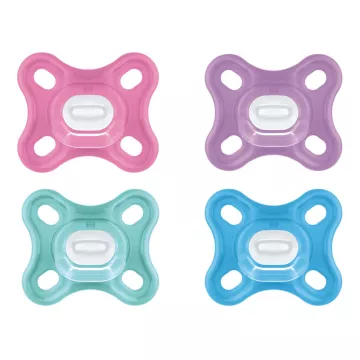
Starting use: It is generally advisable to introduce the pacifier once breastfeeding is well established, often around 3 to 4 weeks after birth. This avoids confusion between breast and teat, which can disrupt breastfeeding.
Cessation of use: Weaning from the pacifier should ideally begin around the age of 2, and be completed before the age of 3 to avoid negative effects on the child's oral and speech development.
Personalization: Teats can be personalized with names or patterns to differentiate or personalize them. However, it's crucial to ensure that the materials used for personalization are non-toxic and safe for baby.
Safety considerations: Avoid pacifiers with detachable parts or decorations that could come off and present a choking hazard. Ensure that any customization is carried out by professionals using materials approved for contact with the mouth.
Sterilizing a pacifier is essential for maintaining hygiene. Here are the steps to follow:
Studies suggest that pacifier use during naps and night-time sleep can help reduce the risk of cot death. The pacifier is thought to help keep the airways clear by promoting separation between the tongue and the roof of the mouth. However, it is important to use it correctly and in accordance with your paediatrician's advice.
Signs of deterioration: Inspect the teat regularly for any signs of deterioration, such as :
A pacifier is a childcare accessory designed to soothe and calm babies. It generally consists of a silicone or rubber part designed to be sucked by the child, attached to a plastic shield that prevents the baby from swallowing the pacifier whole.
The pacifier's main uses include reducing the need for non-nutritive sucking, which is a natural behavior for babies. It also helps soothe children during teething and reduces the risk of cot death when used during sleep.
Choosing the right pacifier for your baby involves considering several factors:
Using a pacifier requires a number of precautions to ensure your child's safety and well-being:
Prolonged use of pacifiers can have consequences for dental development, including the appearance of malocclusions or palate deformities. Orthodontic pacifiers minimize these risks by encouraging a more natural tongue position and exerting less pressure on the teeth and palate.